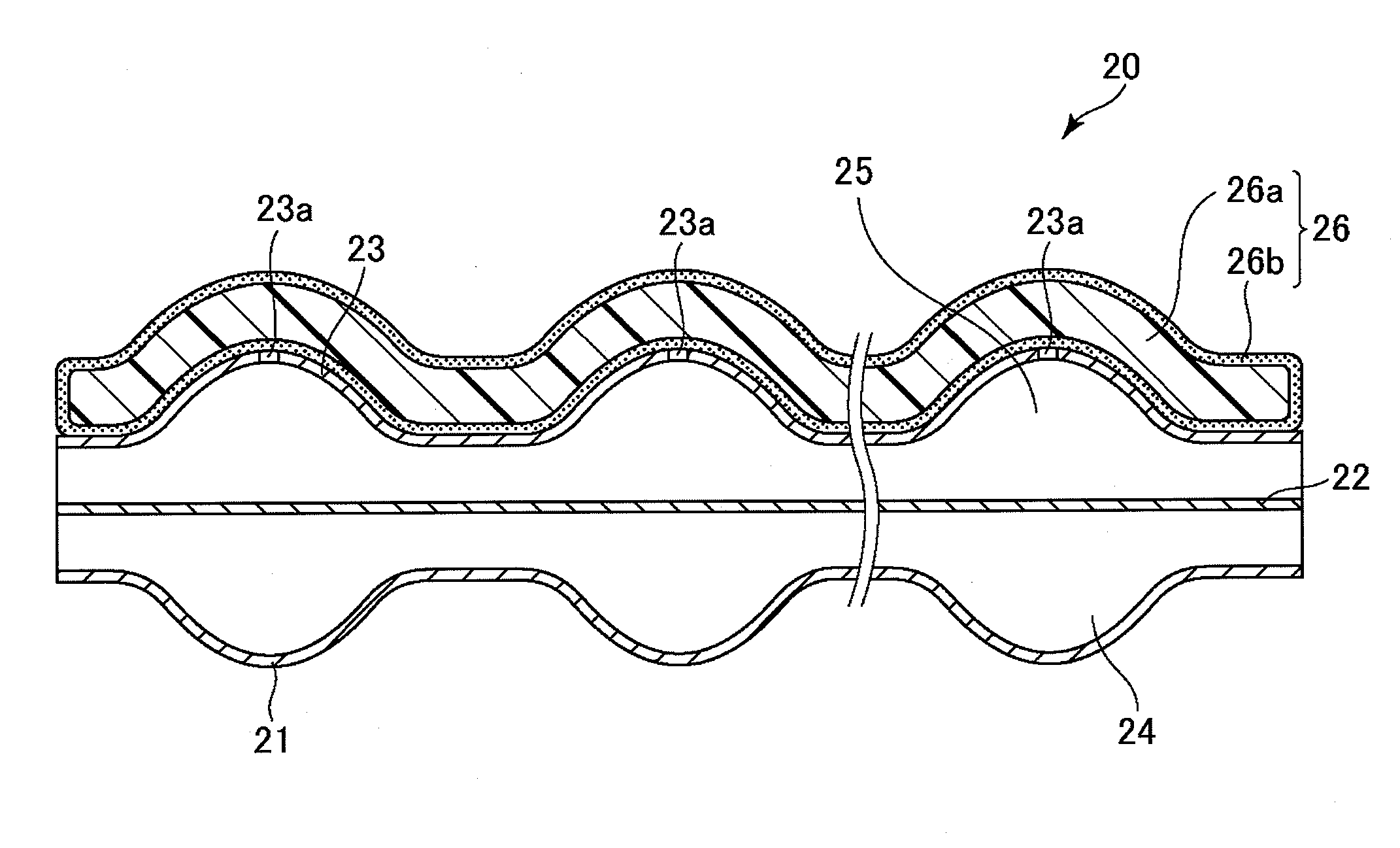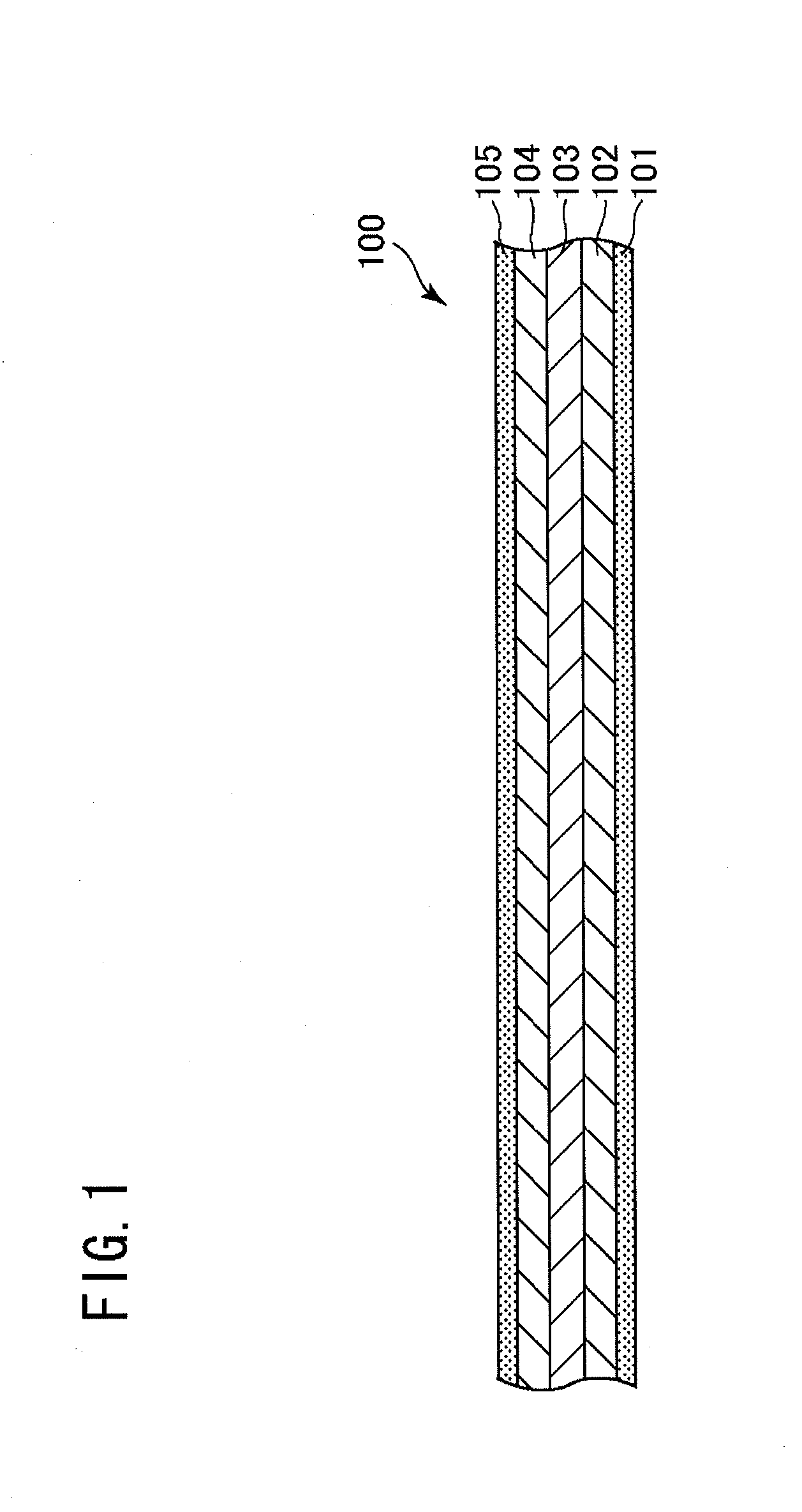Cooling device for use in space environment
a cooling device and space environment technology, applied in lighting and heating apparatus, air humidification systems, heating types, etc., can solve the problems of deterioration in cooling efficiency and easy clogging of porous plates
- Summary
- Abstract
- Description
- Claims
- Application Information
AI Technical Summary
Benefits of technology
Problems solved by technology
Method used
Image
Examples
first embodiment
[0017]FIG. 2 is a cross-sectional view showing the structure of a cooling device 10, which is dedicated for use in the space environment, in a first embodiment of the present invention, and FIG. 3 is a perspective view showing the structure of the cooling device 10. The cooling device 10 includes an inner pipe 11, an outer pipe 12 and a water absorbing body 15. The water absorbing body 15 is disposed to surround the outer face of the outer pipe 12.
[0018]The inner pipe 11 is housed in the outer pipe 12. The space inside the inner pipe 11 is used as an inner flow path 13 and the spaces between the inner pipe 11 and the outer pipe 12 are used as outer flow paths 14. As described later, coolant to be cooled flows through the inner flow path 13 and feedwater to be evaporated or sublimated flows through the outer flow paths 14. In this embodiment, the inner pipe 11 and the outer pipe 12 are both made of metal having a superior thermal conductivity, such as copper. This means that the inne...
second embodiment
[0027]FIG. 4 is a cross-sectional view showing the structure of a cooling device 20 dedicated for use in the space environment in the second embodiment of the present invention. The cooling device 20 includes a rear plate 21, a partition wall 22, a front plate 23 and a water absorbing body 26. The rear plate 21 and the partition wall 22 are placed opposed to each other, and a coolant flow path 24 is formed between the rear plate 21 and the partition wall 22. Furthermore, a feedwater flow path 25 is formed between the partition wall 22 and the front plate 23. The rear plate 21, the partition wall 22 and the front plate 23 are all made of metal having a superior thermal conductivity, such as copper. This means that the coolant flow path 24 and the feedwater flow path 25 are thermally coupled, allowing heat exchange between the coolant flowing through the coolant flow path 24 and the feedwater flowing through the feedwater flow path 25.
[0028]The front plate 23 has protrusions which pro...
PUM
 Login to View More
Login to View More Abstract
Description
Claims
Application Information
 Login to View More
Login to View More - R&D
- Intellectual Property
- Life Sciences
- Materials
- Tech Scout
- Unparalleled Data Quality
- Higher Quality Content
- 60% Fewer Hallucinations
Browse by: Latest US Patents, China's latest patents, Technical Efficacy Thesaurus, Application Domain, Technology Topic, Popular Technical Reports.
© 2025 PatSnap. All rights reserved.Legal|Privacy policy|Modern Slavery Act Transparency Statement|Sitemap|About US| Contact US: help@patsnap.com



